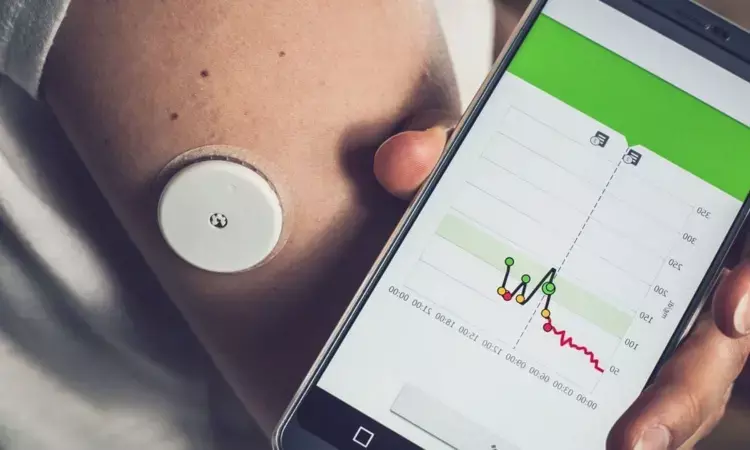- Home
- Medical news & Guidelines
- Anesthesiology
- Cardiology and CTVS
- Critical Care
- Dentistry
- Dermatology
- Diabetes and Endocrinology
- ENT
- Gastroenterology
- Medicine
- Nephrology
- Neurology
- Obstretics-Gynaecology
- Oncology
- Ophthalmology
- Orthopaedics
- Pediatrics-Neonatology
- Psychiatry
- Pulmonology
- Radiology
- Surgery
- Urology
- Laboratory Medicine
- Diet
- Nursing
- Paramedical
- Physiotherapy
- Health news
- Fact Check
- Bone Health Fact Check
- Brain Health Fact Check
- Cancer Related Fact Check
- Child Care Fact Check
- Dental and oral health fact check
- Diabetes and metabolic health fact check
- Diet and Nutrition Fact Check
- Eye and ENT Care Fact Check
- Fitness fact check
- Gut health fact check
- Heart health fact check
- Kidney health fact check
- Medical education fact check
- Men's health fact check
- Respiratory fact check
- Skin and hair care fact check
- Vaccine and Immunization fact check
- Women's health fact check
- AYUSH
- State News
- Andaman and Nicobar Islands
- Andhra Pradesh
- Arunachal Pradesh
- Assam
- Bihar
- Chandigarh
- Chattisgarh
- Dadra and Nagar Haveli
- Daman and Diu
- Delhi
- Goa
- Gujarat
- Haryana
- Himachal Pradesh
- Jammu & Kashmir
- Jharkhand
- Karnataka
- Kerala
- Ladakh
- Lakshadweep
- Madhya Pradesh
- Maharashtra
- Manipur
- Meghalaya
- Mizoram
- Nagaland
- Odisha
- Puducherry
- Punjab
- Rajasthan
- Sikkim
- Tamil Nadu
- Telangana
- Tripura
- Uttar Pradesh
- Uttrakhand
- West Bengal
- Medical Education
- Industry
CGM and intermittently scanned CGM effective in reducing HbA1c levels in patients with type 2 diabetes

UK: A systematic review and meta-analysis of interventional evidence has shed light on the safety and efficacy of continuous glucose monitoring (CGM) and intermittently scanned continuous glucose monitoring (isCGM) in patients with type 2 diabetes (T2D).
The study, published in Diabetes Care, showed that both CGM and isCGM can reduce glycated haemoglobin (HbA1c) levels in individuals with type 2 diabetes (T2D), but isCGM use is associated with improved user satisfaction.
Traditional diabetes self-monitoring of blood glucose (SMBG) involves inconvenient finger pricks. Continuous glucose monitoring and intermittently scanned CGM systems offer CGM, enhancing T2D management with comprehensive, convenient data. Samuel Seidu, Leicester General Hospital, Leicester, UK, and colleagues aimed to assess the potential harms and benefits of CGM and isCGM compared with usual care or SMBG in individuals with type 2 diabetes.
For this purpose, the researchers conducted a comprehensive search of online databases up to August 2023. The studies that met the following criteria were analyzed: randomized controlled trials (RCT) with the comparison of at least two interventions for ≥8 weeks in T2D patients, including CGM in real-time/retrospective mode, short-/long-term CGM, isCGM, and SMBG, reporting glycemic and relevant data.
A standardized data collection form was used, extracting details including year, author, study design, intervention, baseline characteristics, and outcomes.
The study revealed the following findings:
- 26 RCTs (17 CGM and 9 isCGM) comprising 2,783 patients with T2D (CGM 632 versus usual care/SMBG 514 and isCGM 871 versus usual care/SMBG 766) were included.
- CGM reduced HbA1c (mean difference −0.19%) and glycemic medication effect score (−0.67), reduced user satisfaction (−0.54) and increased the risk of adverse events (relative risk [RR] 1.22).
- isCGM reduced HbA1c by −0.31%, increased user satisfaction (0.44), improved CGM metrics, and increased the risk of adverse events (RR 1.30).
- Neither CGM nor isCGM had a significant impact on blood pressure, body composition, or lipid levels.
"In individuals with type 2 diabetes, both CGM and isCGM demonstrated a reduction in HbA1c levels, and unlike CGM, isCGM use was associated with improved user satisfaction," the researchers wrote.
They added, "The impact of these devices on body composition, blood pressure, and lipid levels remains unclear, while both isCGM and CGM use was associated with increased risk of adverse events, with no impact on hypoglycemia."
Limitations include single-study outcomes, small samples, uncertainty for younger adults, and population variations. Additionally, the researchers suggest considering the inclusion of <10 studies for most endpoints restricted comprehensive analysis, and technological advancements over time.
Reference:
Samuel Seidu, Setor K. Kunutsor, Ramzi A. Ajjan, Pratik Choudhary; Efficacy and Safety of Continuous Glucose Monitoring and Intermittently Scanned Continuous Glucose Monitoring in Patients With Type 2 Diabetes: A Systematic Review and Meta-analysis of Interventional Evidence. Diabetes Care 20 December 2024; 47 (1): 169–179. https://doi.org/10.2337/dc23-1520
Dr Kamal Kant Kohli-MBBS, DTCD- a chest specialist with more than 30 years of practice and a flair for writing clinical articles, Dr Kamal Kant Kohli joined Medical Dialogues as a Chief Editor of Medical News. Besides writing articles, as an editor, he proofreads and verifies all the medical content published on Medical Dialogues including those coming from journals, studies,medical conferences,guidelines etc. Email: drkohli@medicaldialogues.in. Contact no. 011-43720751


